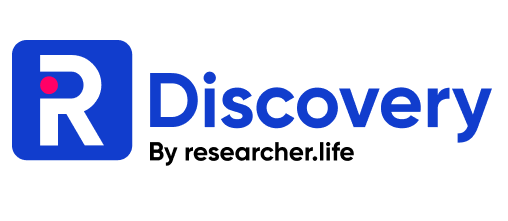Cancer Treatment Using Neutron Capture with Boron: Comparing the Effectiveness of Neutron Energy Generating Sources
DOI:
https://doi.org/10.62810/jnsr.v3i2.214Keywords:
Particle accelerators, Radiotherapy, Neutron capture, Neutron energy, Neutron sourcesAbstract
Cancer treatment with neutron radiation is a significant scientific advancement. Neutrons are produced through nuclear fission in reactors, nuclear reactions in accelerators and neutron generators, and are also emitted by radioisotopes. The purpose of this article is to review and compare neutron sources obtained from various natural and artificial sources/methods; they can be used in the treatment of various diseases, especially cancers, in a therapeutic technique known as boron neutron capture therapy (BNCT), which, like proton accelerators, relies on external neutron sources, but with enhanced characteristics, can serve as a promising method for treatment. The results show that whenever hyperthermal and fast neutrons are produced, neutron modulators can be used to convert them into thermal neutrons. In conclusion, given the operational advantages of accelerators—such as no radiation emission when turned off, ease of adjustment, lower cost, compact size, and higher safety—they are more suitable than other sources for medical applications.
Downloads
References
Barth, R. F., Mi, P., & Yang, W. (2018). Boron delivery agents for neutron capture therapy of cancer. Cancer Communications, 38(35). https://doi.org/https://doi.org/10.1186/s40880-018-0299-7 DOI: https://doi.org/10.1186/s40880-018-0299-7
Belyakov, O., Msimang, Z., Giammarile, F., & Holmberg, O. (2023). Advances in Neutron capture therapy. IAEA.
Bleuel, D. L., Donahue, R. J., & Ludewigt, B. A. (1998). Designing accelerator-based epithermal neutron beams for boron neutron capture therapy. Med. Phys., 25(9), 1725-34. https://doi.org/doi:https://doi.org/10.1118/1.598353 DOI: https://doi.org/10.1118/1.598353
Calvo, F. A., Meirino, R. M., & Orecchia, R. (2006). Intraoperative Radiation Therapy First Part" Rationale and Techniques. Crit Rev Oncol Hematol., 59(2), 106-115. https://doi.org/10.1016/j.critrevonc.2005.11.004 DOI: https://doi.org/10.1016/j.critrevonc.2005.11.004
Cerullo, N., Esposito, J., & Montanini, B. (2014). Feasibility of a Neutron Beam for BNCT Application Based on Nuclear Fusion Reactions D-D and D-T. Journal of Nuclear Science and Technology, 37(1), 384-88. https://doi.org/10.1080/00223131.2000.10874911 DOI: https://doi.org/10.1080/00223131.2000.10874911
Copoulat, M. E., & Kreaner, A. J. (2017). A 13C(d,n)-based epithermal neutron source for Boron Neutron Capture. Physica Medica, 33, 106-113. https://doi.org/10.1016/j.ejmp.2016.12.017 DOI: https://doi.org/10.1016/j.ejmp.2016.12.017
Farhood, B., Samadian, H., Ghorbani, M., Zakariaee, S. S., & Knaup, C. (2018). Physical, dosimetric and clinical aspects and delivery systems in neutron capture therapy. Rep Pract Oncol Radiother., 23(5), 462-473. https://doi.org/10.1016/j.rpor.2018.07.002 DOI: https://doi.org/10.1016/j.rpor.2018.07.002
Gholami, M. H., & Eskandari , M. R. (2011). Selecting the best proton energy for use in boron neutron therapy . Iran Nuclear Conference. Retrieved from https://www.sid.ir/fa/seminar/ViewPaper.aspx?ID=20190
Godley, A., & Xia, P. (2019). Physics in Radiation Oncology Self-Assessment Guide. New York: Medical Physics. https://doi.org/http://doi.org/10.1002/mp.13449 DOI: https://doi.org/10.1002/mp.13449
He, H., Li, J., Jiang, P., & et al. (2021). The basis and advances in clinical application of boron neutron capture therapy. Radiat Oncol., 16(216). https://doi.org/http://doi: 10.1186/s13014-021-01939-7 DOI: https://doi.org/10.1186/s13014-021-01939-7
Hirose, K., Konno, A., Hiratsuka, J., Kikuchi, Y., Murakami, M., & Takai, Y. (2021). Boron neutron capture therapy using cyclotron-based epithermal neutron source and borofalan (10B) for recurrent or locally advanced head and neck cancer (JHN002): An open-label phase II trial. Radiotherapy&Oncology, 155, 182-187. https://doi.org/ 10.1016/j.radonc.2020.11.001 DOI: https://doi.org/10.1016/j.radonc.2020.11.001
Horiike, H., Murata, I., Iida, T., Yoshihashi, S., Hoashi, E., Kato, I., . . . Oshiro, S. (2015). Liquid Li based neutron source for BNCT and science application. Appl Radiat Isot, 106, 92-94. https://doi.org/https://doi.org/10.1016/j.apradiso.2015.07.026 DOI: https://doi.org/10.1016/j.apradiso.2015.07.026
Kalantari , S. Z., Parvazian , A., & Nazari, M. N. (2013). Master's thesis; Investigation of the neutron spectrum of the Isfahan MNSR reactor in the phantom for boron neutron therapy (BNCT) Isfahan University of Te. Isfehan, Ministry of Science, Research and Technology - Isfahan, Iran: Isfahan University of Technology - Faculty of Physics.
Khavari, R. A., & Mirzaee, D. (2024). Using Lithium-6 Filter for Study of Dose Distribution with Max. and Min. Displacement of Prostate Inside the Body by BNCT Method. Cognizance Journal of Multidisciplinary Studies, 4(4), 235-243. https://doi.org/https://doi:10.47760/cognizance.2024.v04i04.016 DOI: https://doi.org/10.47760/cognizance.2024.v04i04.016
Kiyanagi, Y. (2018). Accelerator-based neutron source for boron neutron capture. Therapeutic Radiology and Oncology, 2(55). https://doi.org/doi: 10.21037/tro.2018.10.05 DOI: https://doi.org/10.21037/tro.2018.10.05
Koivunoro, H., Lou, T. P., Reijonen, J., & Leung, K.-N. (2003). A D-D/D-T Fusion Based Neutron Generator System for Liver BNCT. Berkeley: UNT Digital Library.
Kondo, N. (2022). DNA damage and biological responses induced by Boron Neutron Capture Therapy (BNCT). Enzymes, 65-78. https://doi.org/ 10.1016/bs.enz.2022.08.005 DOI: https://doi.org/10.1016/bs.enz.2022.08.005
Kumada, H., Sakae, T., & Sakurai, H. (2023). Current development status of accelerator-based neutron source for boron neutron capture therapy. APJ Techn. Instrum, 10(18). https://doi.org/https://doi.org/10.1140/epjti/s40485-023-00105-5 DOI: https://doi.org/10.1140/epjti/s40485-023-00105-5
Madsen, M. (2022). Neutrons for Neurons and Cyclotrons for Radioisotopes. IAEA.
Martin, R. C., Knauer, J. B., & Balo, P. A. (2000). Production, Distribution, and Applications of Californium-252 Neutron Sources. Applied Radiation and Isotopes, 53(4-5), 785-92. https://doi.org/10.1016/s0969-8043(00)00214-1 DOI: https://doi.org/10.1016/S0969-8043(00)00214-1
Masoud Zadeh, A., Ghasemi, A., Salehi, R., & Taheri, M. (2012). Investigating the possibility of using radioisotope neutron sources in boron neutron therapy. Razi Journal of Medical Sciences, 19(97), 45-53.
Miyatake, S. I., Kawabata, S., Hiramatsu, R., & Kuroiwa, T. (2016). Boron Neutron Capture Therapy for Malignant Brain Tumors. Neurologia Medico-Chirurgica, 361-71. https://doi.org/10.2176/nmc.ra.2015-0297 DOI: https://doi.org/10.2176/nmc.ra.2015-0297
Naito, F. (2018). Introduction to accelerators for boron neutron capture therapy. Ther Radiol Oncol., 2(54). https://doi.org/http://dx.doi.org/10.21037/tro.2018.10.11 DOI: https://doi.org/10.21037/tro.2018.10.11
Nakai, K., Yamamoto, T., Kumada, H., & Matsumura, A. (2014). Boron Neutron Capture Therapy for Glioblastoma: A Phase-4. European Association of NeuroOncology Magazine, 4(3), 116-23. https://doi.org/https://doi:10.1016/j.canlet.2008.01.021 DOI: https://doi.org/10.1016/j.canlet.2008.01.021
Nakamura, S., Takemori, M., Nakaichi, T., Shuto, Y., kashihara, T., & Kotaro, I. (2024). A method for delivering the required neutron fluence in an accelerator-based boron neutron capture therapy system employing a lithium target. Sci. Rep., 14(1). https://doi.org/https://doi.org/10.1038/s41598-024-62060-9 DOI: https://doi.org/10.1038/s41598-024-62060-9
Podgorask, E. B. (2016). Radiation Physics for Medical Physicists. Springer. DOI: https://doi.org/10.1007/978-3-319-25382-4
Sauerwein , W. A., Witting, A., Moss, R., & Nakagawa, Y. (2012). Neutron Capture Therapy Principle and Applications. Springer. DOI: https://doi.org/10.1007/978-3-642-31334-9
Sosilowati, A. D., & Yohannes, S. (2016). Boron Neutron Capture Therapy (BNCT) using Compact Neutron Generator. Andnesian Juornal of Physics and Nuclear Applications, 1(2), 73-80. DOI: https://doi.org/10.24246/ijpna.v1i2.73-80
Verbeke, J., Costes, S., & Leung, K. (1998). Designing an Epithermal Neutron Beam for Boron Neutron Capture Therapy for the Fusion Reactions 2H(d,n)3He and 3H(d,n)4He. Lawrence Berkeley National Laboratory.
Zhang, X., & Lin, Y. (2023). Nanostructured boron agents for boron neutron capture therapy: a review of recent patents. Medical Review, 3(5), 425-443. https://doi.org/https://doi:10.1515/mr-2023-0013 DOI: https://doi.org/10.1515/mr-2023-0013
Downloads
Published
How to Cite
Issue
Section
License
Copyright (c) 2025 Sayed Sarwar Ibtikar, Rajab Ali Khavari, fahim yousufy

This work is licensed under a Creative Commons Attribution-NonCommercial 4.0 International License.



























